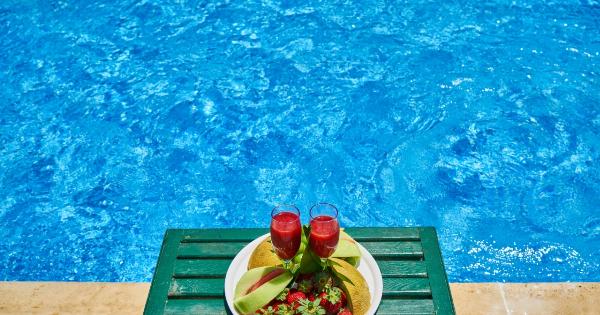Excessive salt consumption has been linked to various health problems, such as high blood pressure and cardiovascular diseases. While salt is an essential mineral needed by our bodies, it’s important to consume it in moderation.
If you’re looking to reduce your salt intake, here are 10 easy ways to help you get started.
1. Read Food Labels
One of the simplest ways to control your salt intake is by reading food labels. Check the sodium content on packaged foods and opt for lower sodium alternatives whenever possible.
Look for products labeled “low sodium,” “reduced sodium,” or “no added salt.”.
2. Cook from Scratch
Cooking meals from scratch gives you complete control over the ingredients you use. By preparing your meals at home, you have the power to reduce the amount of salt added to your dishes.
Experiment with herbs, spices, and other flavor enhancers to create delicious meals without relying on excessive salt.
3. Limit Processed Foods
Processed foods, such as frozen dinners, canned soups, and snack foods, tend to be high in sodium. Limiting your consumption of these convenience foods can significantly reduce your salt intake.
Instead, opt for fresh fruits, vegetables, and whole foods as much as possible.
4. Be Cautious with Condiments
Many condiments, like ketchup, soy sauce, and salad dressings, can be laden with sodium. Be mindful of the amount you use and consider healthier alternatives or make your own versions using low-sodium ingredients.
5. Rinse Canned Foods
Canned vegetables, beans, and other legumes often come packed in a salty liquid. Rinse these foods thoroughly under running water before using them to reduce their sodium content. Alternatively, you can choose low-sodium or no-salt-added versions.
6. Choose Fresh Herbs and Spices
Fresh herbs and spices are excellent alternatives for boosting the flavor of your meals without relying on salt. Experiment with different combinations to enhance the taste of your dishes naturally.
7. Opt for Unsalted Snacks
Snacking is a common source of excessive salt intake. Instead of reaching for salted chips or popcorn, choose unsalted nuts, seeds, or air-popped popcorn to satisfy your cravings.
8. Practice Portion Control
Even if you’re using lower sodium options, it’s essential to practice portion control. Consuming large quantities of even low-sodium foods can still add up to a high salt intake.
Be mindful of your portion sizes and listen to your body’s signals of hunger and fullness.
9. Limit Eating Out
Eating out at restaurants or ordering takeout often means consuming meals with higher sodium levels. Opting to eat at home more frequently allows you to have better control over the amount of salt used in your food.
10. Stay Hydrated
Drinking plenty of water can help flush out excess sodium from your body. Staying adequately hydrated is essential for overall health and can aid in regulating sodium levels.






























